2024/09/27 Fri
Unraveling the Dragon Kingdom
National Symbols of Bhutan|ブータン王国のシンボル
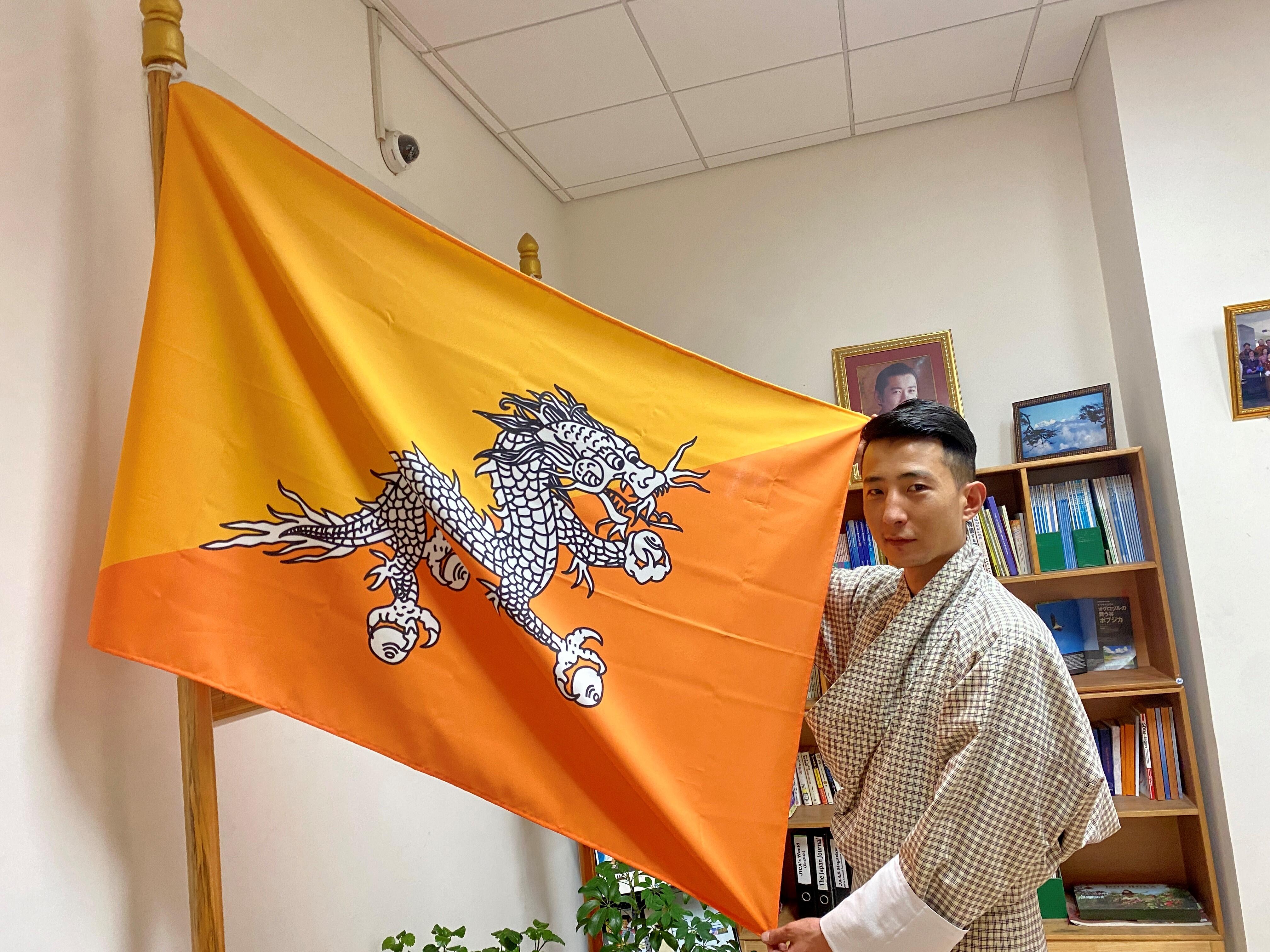

Konnichiwa!
My name is Thinlay Norbu.This is my second artcile.
こんにちは!ティンレー・ノルブです。
これは、私の2回目の記事です。
When you think of Bhutan, what comes to mind?
Is it a secluded Himalayan paradise filled with towering mountains and ancient monasteries? Or perhaps a traditional kingdom deeply rooted in Buddhist beliefs? It's likely that both of these images resonate with many people, especially those who haven't had the chance to visit. To some it is a rich biological and cultural hotspot.
ブータンについて考えるとき、何を思い浮かべますか?
そびえ立つ山々と古の僧院で満たされた人里離れたヒマラヤの楽園でしょうか?
それとも、仏教の信仰に深く根ざした伝統的な王国でしょうか?
おそらく、これらのイメージは、特にブータンを訪れる機会がなかった多くの人々の心に響くことでしょう。
また、ある人々にとっては、ブータンは豊かな生き物と文化のホットスポットです。
But Bhutan is more than just the things that I mentioned. It's a land rich in history, culture, and symbolism. Beyond the stunning landscapes and the unique developmental philosophy of Gross National Happiness, there are national symbols which tell stories of ancient traditions, beliefs, and enduring values.
Let me share the most prominent ones:
しかし、ブータンは私が述べたものだけではありません。
歴史、文化、象徴性に富んだ国です。
美しい風景と国民総幸福量のユニークな開発哲学を超えて、古来の伝統、信仰、永続的な価値観の物語を語るシンボルがあります。
ここでは、最も有名なものを紹介させてください。
National Flag 国旗
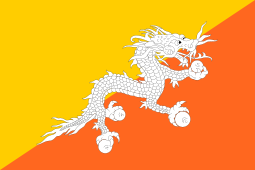
The national flag is a rectangular flag divided diagonally into two triangles: yellow and orange.
A white dragon, symbolizing the "Thunder Dragon" (Druk) of Bhutanese mythology, is placed in the center.
国旗は長方形で、対角線上に黄色とオレンジ色の 2 つの三角形に分かれています。
中央にはブータン神話の「雷龍」(ドゥルク)を象徴する白い龍が描かれています。
The yellow triangle represents the secular tradition and authority of the King, while the orange triangle represents the Buddhist spiritual tradition. The dragon symbolizes the name of the kingdom, "Druk Yul" or "Land of the Thunder Dragon."
黄色の三角形は世俗的な伝統と国王の権威を表し、オレンジ色の三角形は仏教の精神的伝統を表しています。
龍はブータン王国の名前「ドゥルク ユル」、つまり「雷龍の国」を象徴しています。
National Emblem 国章
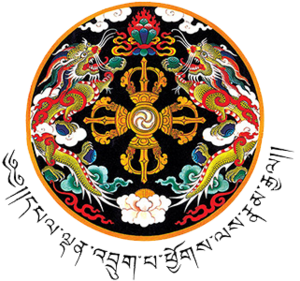
The national emblem is a circular emblem featuring a double diamond-thunderbolt (dorje) placed above a lotus, surmounted by a jewel (norbu) and framed by two dragons.
国章は、中央に二重のダイヤモンドの雷(いかずち)、下方には蓮の上に宝石が置かれ、周りを2匹の龍が囲んだ円形の紋章です。
The thunderbolt represents the harmony between secular and religious power. The lotus symbolizes purity, the jewel expresses sovereign power, and the two dragons represent the name of the country.
雷は世俗的な力と宗教的な力の調和を表しています。
蓮は純粋さを象徴し、宝石は主権を表し、2匹の龍は国の名前を表しています。
National Animal 国獣 : Takin
The Bhutan Takin, a hairy herbivore with two-toed hooves that roams the eastern Himalayas, is revered as the national animal of Bhutan. Scientifically it is known as ‘Budorcas Taxicolor.’
ブータンターキンは、ヒマラヤ東部を歩き回る、2本のひずめを持った毛むくじゃらの草食動物で、ブータンの国獣として崇められています。
学名では「Budorcas Taxicolor」として知られています。
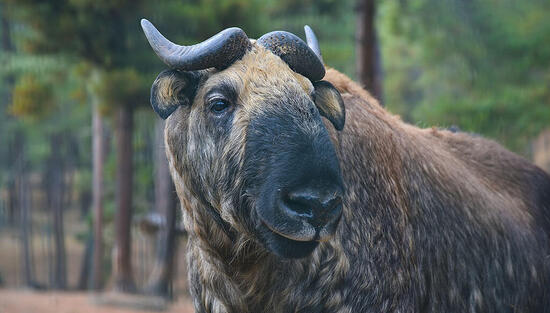
The takin is considered a sacred animal in Bhutan and is often associated with the Drukpa Kagyu school of Buddhism.
In the 15th century, a renowned spiritual teacher named Lama Drukpa Kuenley arrived in Bhutan from Tibet. Legend has it that the Bhutanese people, eager to witness a miracle, challenged the master to perform a magical feat.
ターキンはブータンでは神聖な動物とみなされており、しばしば仏教のドゥクパ・カギュ派と関連付けられます。
15世紀、ラマ・ドゥクパ・クンレーという名の有名な宗教的指導者がチベットからブータンにやって来ました。
伝説によると、ブータンの人々は奇跡を目撃したいと切望し、その指導者に魔法の技を披露するよう挑んだそうです。
The ruler of an upland district commanded Lama Drukpa Kuenley to demonstrate his powers and Lama Drukpa Kuenley agreed to do so but only if he was given a whole cow and goat to feast on. The people complied, providing the generous meal.
高地の領主がラマ・ドゥクパ・クンレーに力を見せるよう命じると、ラマ・ドゥクパ・クンレーはご馳走に牛とヤギを丸ごと一頭もらうという条件でそれに応じました。
人々はそれに従い、たっぷりと食事を提供しました。
After devouring the meat, Lama Drukpa Kuenley left the bones behind. With a wave of his hand and a powerful mantra, he miraculously joined the decapitated goat's head to the cow's body. The creature, now imbued with new life, was unlike anything the Bhutanese had ever seen.
肉をむさぼり食った後、ラマ・ドゥクパ・クンレーは骨を残しました。
そして、手を振って強力なマントラを唱えると、首を切られたヤギの頭を牛の体に見事にくっつけました。
今や新しい命が吹き込まれたその生き物は、ブータン人がこれまで見たことのないものでした。
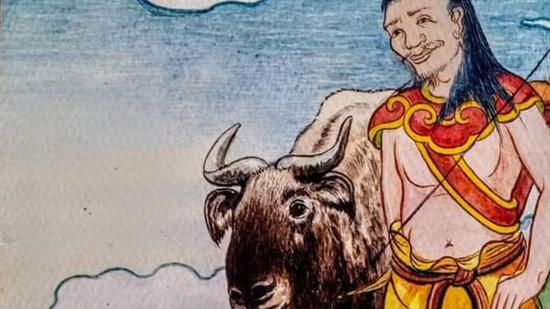
It was then that Lama Drukpa Kuenley bestowed upon this unique animal the name "Dong Gyem Tsey," or Takin. And so, the legend of the Takin, a symbol of Bhutan's rich culture and spirituality, was born.
その時、ラマ・ドゥクパ・クンレーはこのユニークな動物に「ドン・ギェム・ツェイ」、つまりターキンという名前を与えました。
こうして、ブータンの豊かな文化と精神性の象徴であるターキンの伝説が誕生しました。
In order to ensure that the local people as well as foreigners get the opportunity to see the majestic national animal, the Takin Wildlife Park was established, which is located in Thimphu, the capital city.
地元の人々だけでなく外国人も雄大な国獣を見られるよう、首都ティンプーにはターキン野生動物公園が設立されています。
National Bird 国鳥 : Raven
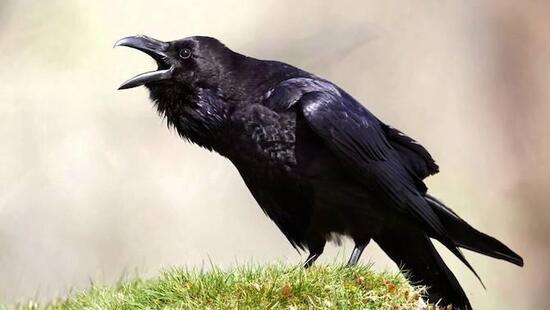
The Raven is Bhutan's national bird. The Raven, a large, black bird with a distinctive cawing call is often confused with the Crow, a similar but relatively smaller bird, also found in Bhutan.
ワタリガラスはブータンの国鳥です。
ワタリガラスは、独特の鳴き声を持つ大きな黒い鳥で、ブータンに生息する、似たような比較的小型のカラスとよく混同されます。
The raven, a bird often shrouded in mystery, holds a special place in Bhutanese culture. More than just a creature of the skies, Bhutanese people believe it embodies the powerful Buddhist deity 'Jarog Dongchen'. This deep-rooted connection is reflected in the local language, where the raven is simply known as 'Jarog'.
ワタリガラスは謎に包まれたところも多い鳥ですが、ブータン文化において特別な位置を占めています。
ブータンの人々は、ワタリガラスは単に空を飛ぶ生き物というだけでなく、強力な仏教の神「ジャログ・ドンチェン」を体現していると信じています。
この深いつながりは現地の言葉にも反映されており、現地語でカラスは「ジャログ」と呼ばれています。
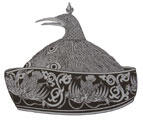
A testament to the raven's significance is the Raven Crown, worn by the Trongsa Penlop [Provincial Governor] Jigme Namgyal (Father of the First King of Bhutan) in the 1885 war against the British. This historic headpiece set a precedent for future royal crowns, including the one worn by the current King of Bhutan. The crown's distinctive feature is the raven's head, a symbol of both the bird's revered status and the Bhutanese people's faith in their protective deity.
ワタリガラスの重要性を示すものとして、1885 年の対英戦争でトンサペンロップ (ブータン中部の知事のような役職)であるジグメ・ナムゲル (ブータン初代国王の父) がかぶったカラスの王冠が挙げられます。
この歴史的な頭飾りは、ブータンの現国王がかぶったものを含め、将来の王冠の先例となりました。
王冠の特徴はカラスの頭で、鳥の崇敬の念とブータン国民の守護神への信仰の象徴となっています。
National Flower 国花 : Himalayan Blue Poppy
The Blue Poppy, scientifically known as ‘Meconopsis gakyidiana’ is a beautiful and fragile, blue-flowering poppy native to Bhutan, found in the high-altitude Himalayan mountains. The fragility symbolizes the delicate nature of Bhutanese culture and the need for careful preservation.
ブルーポピー(学名「Meconopsis gakyidiana」)は、ブータン原産の美しく繊細な青い花を咲かせるケシで、ヒマラヤ山脈の高地に生息しています。この儚さは、ブータン文化の繊細さと、慎重な保護の必要性を象徴しています。
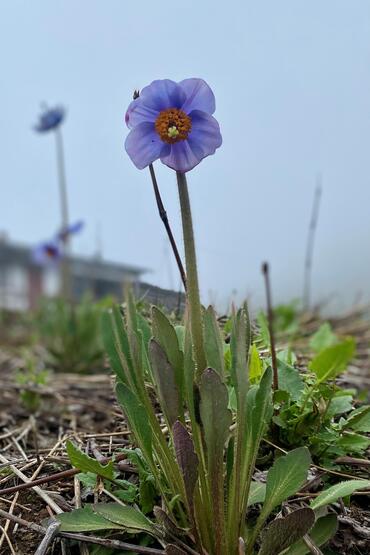
Its delicate blue petals seem to possess a bright glow, especially when surrounded by vibrant green leaves and snow-capped peaks. The golden stamens at the flower's center provide a striking contrast, adding to its overall beauty.
その繊細な青い花びらは、鮮やかな緑の葉と雪をかぶった山頂に囲まれると、特に明るい輝きを放っているように見えます。
花の中心にある金色の雄しべは、印象的なコントラストを描き、全体の美しさを引き立てています。
Once a common sight at Bhutan's high passes, the vibrant blue poppy has become increasingly rare. Its dwindling numbers have sparked concerns about the preservation of Bhutan's unique biodiversity.
かつてはブータンの高山でよく見られた鮮やかなブルーポピーですが、近年では希少なものになりつつあります。
数の減少により、ブータン特有の生物多様性の保全に対する懸念も生じています。
Recognizing the blue poppy's significance as the national flower, the Royal Government of Bhutan has taken steps to safeguard its future. Conservation efforts are underway to protect its delicate habitat and ensure that this iconic symbol of Bhutan continues to flourish for generations to come. Its significance lies in its ability to capture the essence of Bhutan's unique identity and culture, and the importance of preserving its natural heritage.
ブータン政府は、国花としてのブルーポピーの重要性を認識し、その未来を守るための措置を講じています。
このブータンの象徴的なシンボルが、今後何世代にもわたって繁栄し続けるよう、繊細な生息地を保護するための保全活動が進められています。
ブータンのユニークなアイデンティティと文化の真髄をとらえ、自然遺産を保護することの重要性を示す点に、この植物の意義があります。
National Sport 国技 : Archery
Archery is more than just a sport in Bhutan; it's a deeply rooted cultural tradition. Dating back to the 17th century, this ancient practice has played a significant role in the nation's history. Zhabdrung Ngawang Namgyal, the founder of Bhutan, is believed to have played traditional archery with upland nomadic people when he first traveled to Bhutan from Tibet.
ブータンでは、アーチェリーは単なるスポーツではありません。
この国に深く根付いた文化的伝統です。
17 世紀にまで遡るこの古い習慣は、国の歴史において重要な役割を果たしてきました。
ブータンの建国者であるシャブドゥン・ガワン・ナムゲルは、チベットからブータンに初めて旅したとき、高地の遊牧民と伝統的なアーチェリーをしたと考えられています。
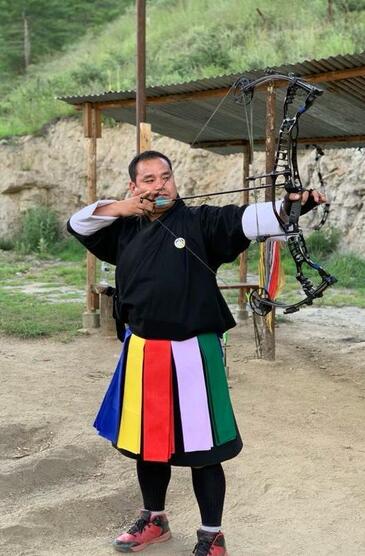
Archery is a beloved national pastime in Bhutan, deeply ingrained in the country's culture. Many Bhutanese men have a passionate devotion to the sport, which is often seen as a symbol of their heritage. From the highlands to the lowlands, archery is a popular activity enjoyed by people across the nation.
アーチェリーはブータンで愛されている国民的娯楽であり、国の文化に深く根付いています。
多くのブータンの男性は、このスポーツに熱中しており、ブータンの伝統の象徴と見なされています。
高地から低地まで、アーチェリーは全国の人々が楽しむ人気のアクティビティです。
Bhutanese archery sets itself apart from international standards. With its longer range and traditional equipment, it's a fascinating reflection of the country's cultural heritage. For instance, Bhutanese archers typically compete on a 145-meter range, twice the length of Olympic ranges. While modern archers often use compound bows and metallic arrows, traditional Bhutanese archery relies on bamboo bows and arrows, preserving a time-honored practice.
ブータンのアーチェリーは、国際基準と異なります。
より長い射程距離と伝統的な装備により、ブータンの文化的伝統を魅力的に反映しています。
たとえば、ブータンのアーチェリー選手は通常、オリンピックの射程距離の 2 倍の長さである 145 メートルの射程距離で競います。
また、現代の射手は複合弓と金属製の矢を使用することが多いですが、伝統的なブータンの弓術は竹製の弓と矢を使い、昔ながらの慣習を守っています。
SHARE





